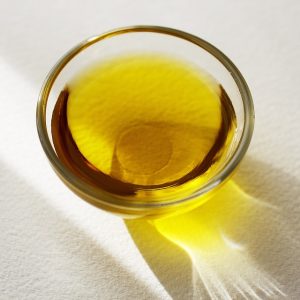When you see a food labeled “zero trans fat,” can you automatically assume it’s a better choice? Not so fast. As food manufacturers rush to remove trans fat-laden products from grocery shelves, many companies are substituting equally unhealthy ingredients to retain the same flavor and texture of the original products.
Americans consume the majority of their trans fat from partially hydrogenated vegetable oils in the form of commercial baked goods and snack foods, French fries and other deep-fried foods, and stick margarines and shortening.
Without question, trans fat from hydrogenated vegetable oil is unhealthy. The hydrogenation process, which hardens the liquid oil to a spreadable consistency, prevents the fat from becoming rancid too quickly and extends its shelf life. However, it also changes the chemical structure of the fat to one that raises “bad” LDL cholesterol and reduces “good” HDL cholesterol. Some research suggests it may increase blood markers of inflammation as well, potentially raising your risk of developing cancer.
Public health concerns about the negative effects of trans fat have become so robust that the Food and Drug Administration (FDA) now requires that the trans fat content of foods be listed on the Nutrition Facts panel. In response, many companies have reformulated their products resulting in an army of “trans fat free” offerings that now fill the aisles at grocery stores across the country.
But are these foods truly free of all trans fat? In fact, no. According to FDA labeling regulations, as long as one standard serving of a food contains less than 0.5 grams (g) of trans fat, a food manufacturer can market the amount as zero.
However, that means that although a serving of three cookies with 0.4 g of trans fat can legally declare itself free of trans fat, if you eat nine cookies, you would get 1.2 g of trans fat where you were expecting none. While this might not sound like much, consider these figures in relation to recommendations that we limit trans fat to less than one percent of total calories (2 g daily for a 2000 calorie diet).
In general, food manufacturers employ three basic techniques to retain the taste, texture and shelf-life of reformulated trans fat free foods. One option is to use tropical oils, like palm and coconut, as a substitute. But although these oils do not include trans fat, they do contain lots of saturated fat, which has a similar effect raising LDL cholesterol levels.
Manufacturers also utilize interesterified oils as a trans fat replacement. These customized blends combine a highly saturated fat and a liquid oil to create a product that looks and acts very much like trans fat.
Unfortunately, some of the trans fat free margarines, pastries, cookies and other products made from interesterified oils actually contain substantially higher levels of saturated fat than the original trans fat version. In the end, rather than making a healthier product, many food manufacturers are asking consumers to choose the lesser of two evils.
Finally, plant breeding (or genetic engineering) can produce vegetable oils that are naturally more stable and thus require less hydrogenation. While the genetically modified oils born from this process can be more healthful than the original, this is not always the case. For example, breeding plants to reduce the polyunsaturated fat in canola oil removes some healthful omega-3 fat that is one of the nutritional bonuses of using the oil to begin with.
For now, don’t automatically assume that anything labeled “no trans fat” must be healthy. Check the label for both trans fat and saturated fat content. Remember, too, that being “trans fat free” does not change the sugar and calorie load of many processed foods.
Image by Ronny Hvass [3] from Pixabay [4]
